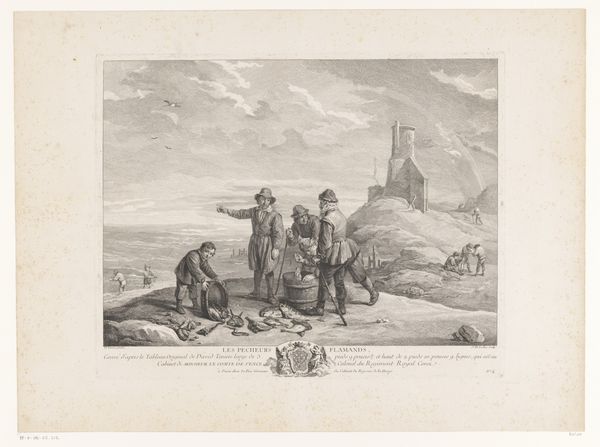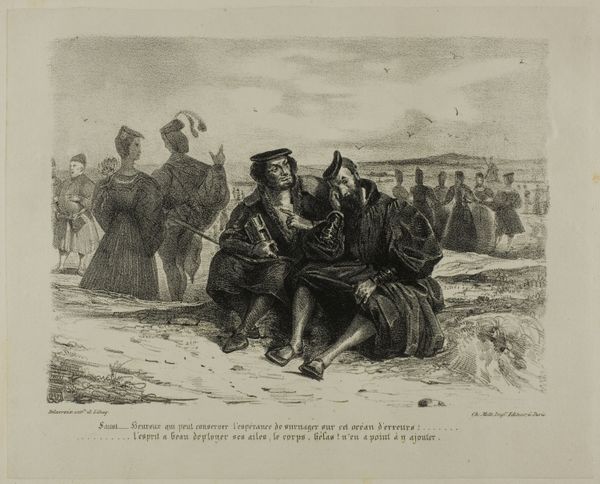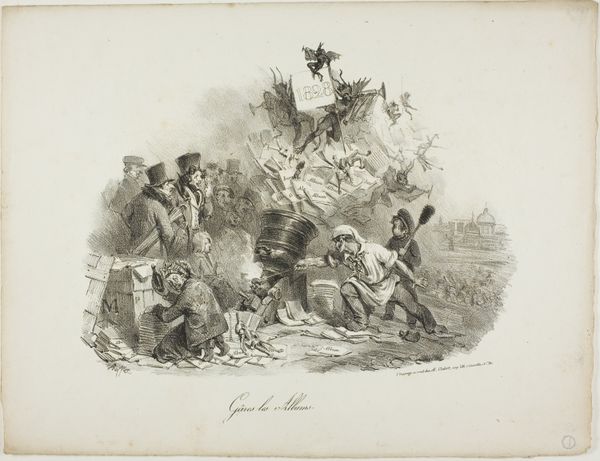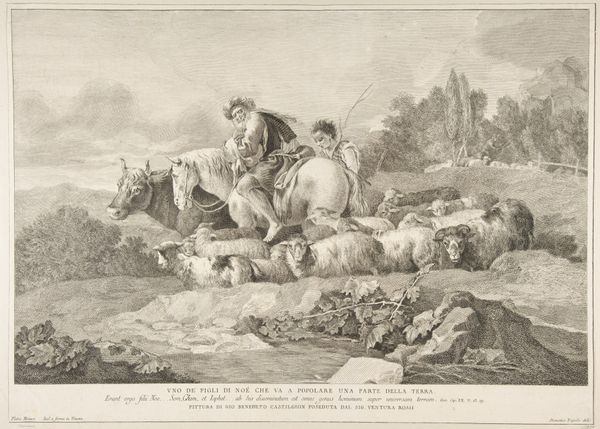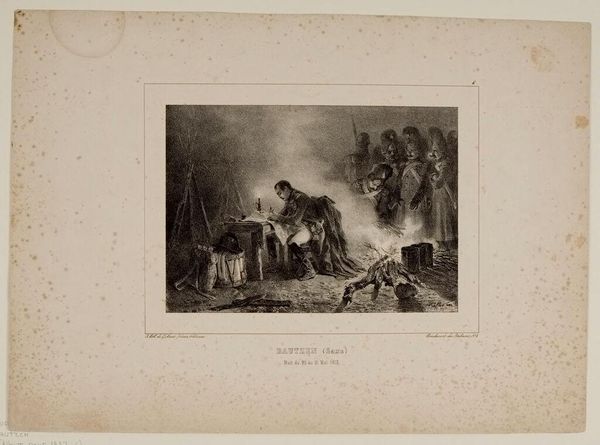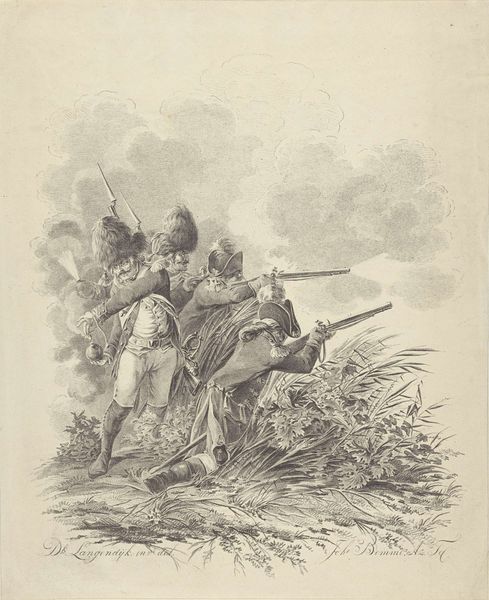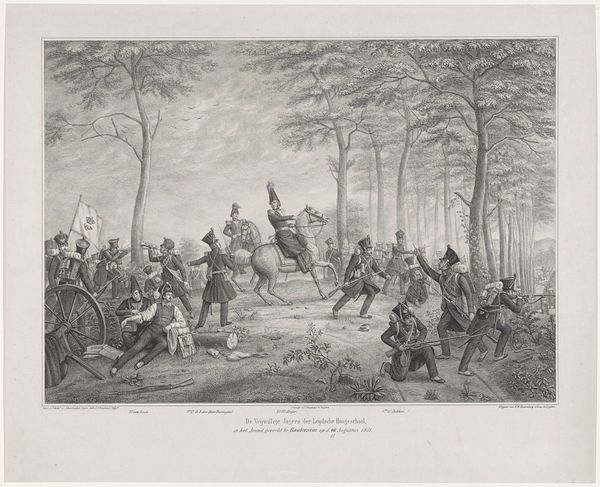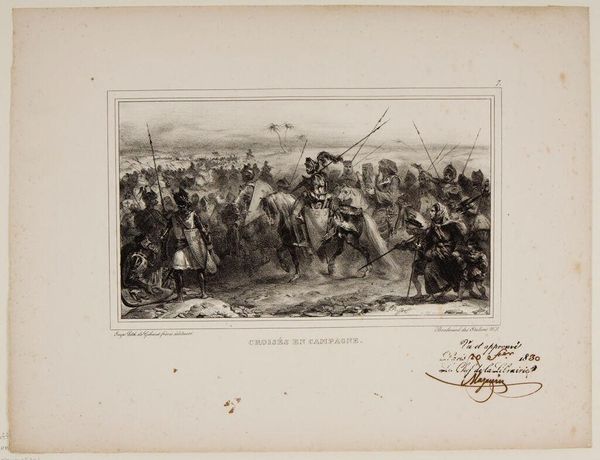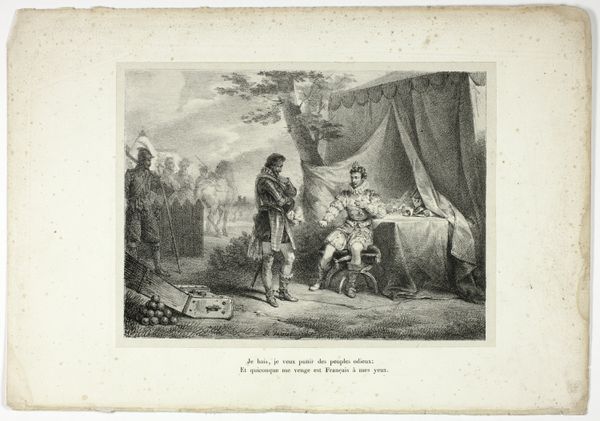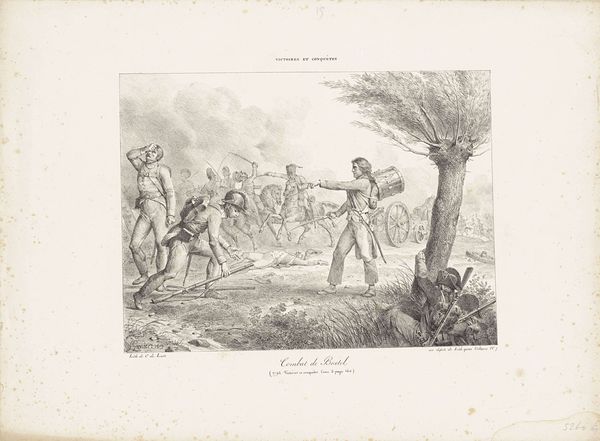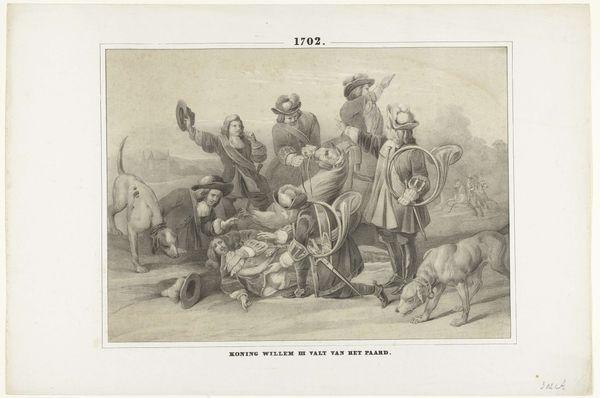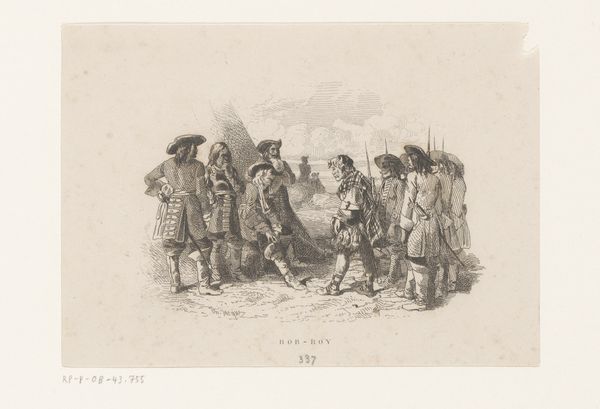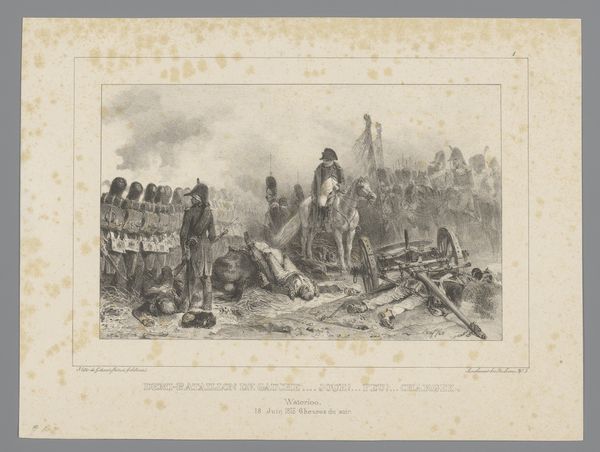
Belgische opstandeling 'La Jambe de bois' achter een kanon, 1830 1830 - 1831
0:00
0:00
print, engraving
#
narrative-art
# print
#
old engraving style
#
romanticism
#
cityscape
#
history-painting
#
engraving
Dimensions: height 225 mm, width 290 mm
Copyright: Rijks Museum: Open Domain
Curator: So, here we have "Belgische opstandeling 'La Jambe de bois' achter een kanon, 1830," an engraving by Jean-Baptiste Madou, dating from 1830-1831, at the Rijksmuseum. Editor: It's such a dynamic image, even for an engraving! There's a real sense of action and the figures are quite expressive. It makes me wonder about the social context surrounding its creation. What can you tell me about its historical significance? Curator: Well, consider the title itself – "The Wooden Leg." This isn't just a portrait; it's an immediate symbol. It depicts a figure central to the Belgian Revolution. These prints were tools, Editor. How do you think images like this fuelled the revolution? Editor: By celebrating and idealizing revolutionary figures! But was it intended for widespread distribution? Because an engraving seems like it would have taken a while. Curator: Precisely. While engravings might seem slow, they were relatively reproducible and became powerful visual propaganda. They shaped public perception and solidified narratives of national identity. Notice how the "wooden leg" isn’t shied away from, it is centered to create not sympathy but rather an image of fortitude. Now how does that change the original historical documentation to create almost a super hero? Editor: It’s fascinating to think about the agency of art, even an inexpensive print, in creating a visual and political narrative during the revolution. So much history is created by the art it spawns. Curator: Exactly! Art wasn’t just reflecting society, it was actively shaping it. Considering images such as this opens up to questions about how artists, consciously or unconsciously, participate in the construction of historical narratives. Editor: That's such a valuable way to look at art, thinking about its political role. Curator: And how museums preserve and present those stories! It’s always a two way street.
Comments
No comments
Be the first to comment and join the conversation on the ultimate creative platform.
